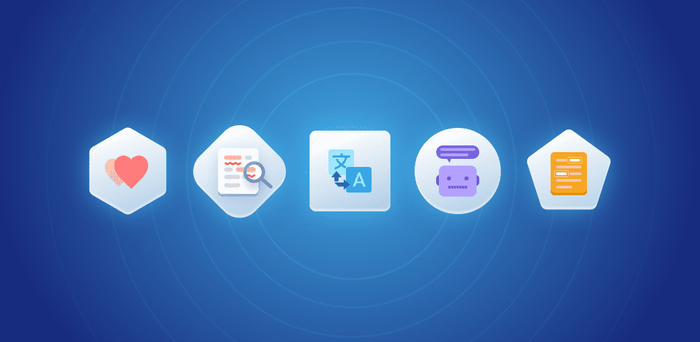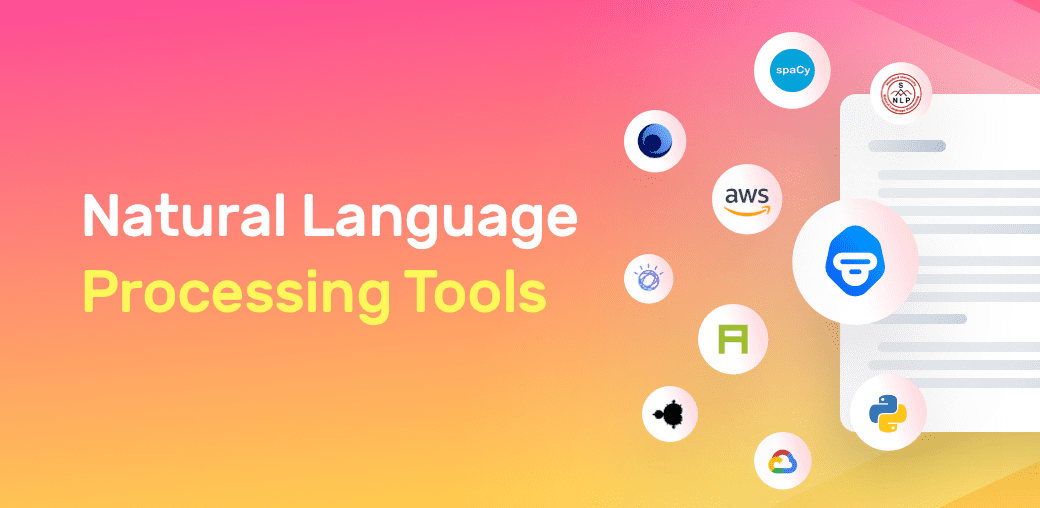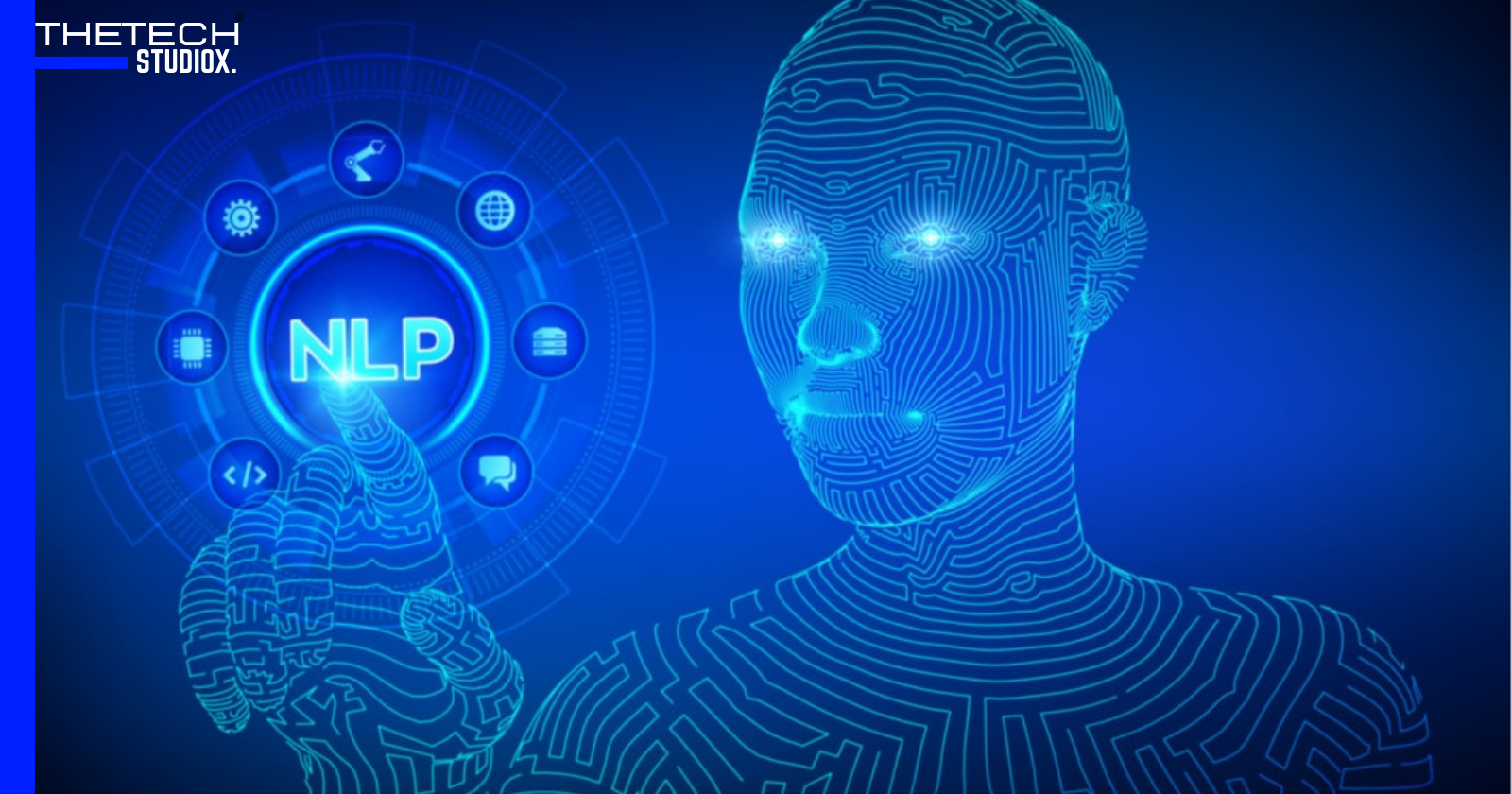Table of Contents
Natural Language Processing (NLP), a cornerstone of AI, has transformed data analytics and become an indispensable asset in artificial intelligence. This technology empowers machines to grasp and decode human language, paving the way for a myriad of business opportunities. Our exploration will cover the pivotal techniques, applications, tools, and challenges that natural language processing brings to the forefront across diverse sectors.
What is Natural Language Processing?
At the intersection of machine learning and human linguistics lies Natural Language Processing (NLP), a dynamic branch of artificial intelligence. It’s dedicated to crafting algorithms and models that equip machines with the ability to comprehend, interpret, and reproduce human language in ways that are both significant and applicable. NLP techniques are pivotal in dissecting and gleaning insights from unstructured textual data, ranging from emails and social media discourse to customer feedback and beyond, solidifying its role in the realm of data science.

Why is Natural Language Processing Important?
In the realm of customer support, effective communication is paramount, and natural language processing stands as a critical conduit between humans and digital systems. NLP enables companies to sift through extensive textual data, extracting actionable insights and refining customer interactions. With NLP at the helm, applications can seamlessly automate functions such as email sorting, multilingual translation, sentiment dissection, and document scrutiny, thereby boosting operational efficiency and informing strategic decisions with the aid of data analytics.
NLP Techniques
Delving into the domain of NLP, we uncover a variety of natural language processing techniques that serve as the backbone for extracting meaningful information from textual content. These nlp techniques are the building blocks that enable the sophisticated analysis and interpretation integral to NLP.

1. Sentiment Analysis
Sentiment analysis stands as a pivotal tool in the arsenal of customer support, deciphering the emotional tone (be it positive, negative, or neutral) within text. This process is instrumental for companies aiming to decode consumer sentiments, monitor brand reputation, and make informed choices rooted in data. Sentiment analysis dives into the depths of customer feedback, online reviews, and social media commentary, offering a window into customer contentment, product image, and prevailing market currents.
2. Named Entity Recognition
Named Entity Recognition (NER) is a process central to entity extraction, where it pinpoints and categorizes distinct named entities such as individuals, corporations, places, and temporal markers within text. This technique is crucial for transforming unstructured text into structured data, providing companies with clarity on consumer tendencies, brand exposure, and market movements. NER’s utility spans across various applications, including information retrieval, query response systems, and the clarification of entity ambiguities.
3. Text Summarization
The goal of text summarization is to distill extensive documents into more digestible, concise versions without sacrificing essential details or overarching themes. This technique is a boon for data exploration and visualization, enabling readers to capture the crux of a document swiftly, without delving into the full text. Text summarization approaches range from extraction-based methods, which cherry-pick pivotal sentences from the source, to abstraction-based methods, which craft new sentences encapsulating the text’s core message.
4. Topic Modeling
Topic modeling, a cornerstone of unsupervised learning in data science, is adept at identifying topics within a text corpus. This technique is instrumental in revealing the underlying patterns and structures in textual data, thus empowering businesses to efficiently organize and categorize extensive information. Algorithms like Latent Dirichlet Allocation (LDA) and Non-negative Matrix Factorization (NMF), which are pivotal in topic modeling, autonomously discern topics and allocate them to documents by analyzing word distribution.
5. Text Classification
Text classification, a fundamental machine learning process, entails assigning predefined categories to text documents based on their content. Leveraging this method, organizations can systematically organize and categorize vast amounts of unstructured text data, including customer feedback and news articles. Data analytics tools such as Naive Bayes, Support Vector Machines (SVM), and advanced deep learning models like Convolutional Neural Networks (CNN) and Recurrent Neural Networks (RNN) are employed to train models on labeled datasets for accurate predictions on novel texts.
6. Keyword Extraction
Keyword extraction is a pivotal process in data science, focusing on the automatic identification and extraction of significant keywords or phrases from text. This technique is particularly valuable for businesses analyzing survey results, as it elucidates the primary themes and topics within documents. By examining the frequency, relevance, and context of words, keyword extraction methods pinpoint the most informative terms.
7. Lemmatization and Stemming
Lemmatization and stemming are key techniques in computational linguistics used to simplify words to their base or root form. Lemmatization strives to convert words to their lexicographical lemma, whereas stemming trims prefixes or suffixes to reveal the word stem. These methods are crucial for diminishing word variations, thereby enhancing the efficiency of text analysis tasks, including information retrieval and text mining.
NLP Applications

Natural language processing (NLP) boasts a myriad of applications across diverse industries. These applications leverage the advanced capabilities of NLP to solve industry-specific challenges, demonstrating the versatility and widespread impact of this technology.
1. Email Filtering
Email filtering stands out as a prime application of NLP services, where algorithms analyze the content and context of emails to categorize them effectively as important, spam, or promotional. This spam detection mechanism streamlines email management for businesses, ensuring critical communication is prioritized.
2. Language Translation
Language translation, facilitated by machine translation systems, is a significant application of NLP that fosters global communication. NLP-powered systems like Google Translate decipher and convert text across languages, breaking down barriers and enabling businesses to engage with international audiences.
3. Smart Assistants
Smart assistants, including Siri, Alexa, and Google Assistant, harness the power of natural language processing (NLP) to comprehend and act on user queries and commands. These voice-activated assistants can execute tasks, provide answers, and deliver information by analyzing natural language input. NLP is the cornerstone that allows smart assistants to discern user intent and craft relevant responses.
4. Document Analysis
Document analysis through NLP techniques is pivotal for sifting through and interpreting vast amounts of textual content. Applications such as document classification, information extraction, named entity recognition, and summarization are instrumental for businesses to structure and mine insights from unstructured text, including legal documents, research papers, and customer feedback.
NLP Tools

The landscape of natural language processing tools is rich with various nlp software and libraries designed to facilitate NLP tasks. Let’s delve into some of the most widely-used NLP tools available today.
1. Gensim
Gensim stands out as a Python library dedicated to topic modeling and enhancing document similarity measures. It boasts efficient algorithms such as Latent Semantic Analysis (LSA) and LDA for topic modeling, alongside word2vec for crafting word embeddings, making it a go-to for those involved in semantic analysis.
2. SpaCy
SpaCy, an open-source NLP library, is renowned for its efficient and scalable approach to natural language processing. It comes equipped with pre-trained models that tackle a variety of NLP tasks, including named entity recognition, part-of-speech tagging, and dependency parsing, solidifying its status among the top nlp libraries.
3. IBM Watson
IBM Watson delivers a comprehensive suite of AI services tailored for natural language processing services, enhancing the way we understand and process human language. Its APIs are adept at performing sentiment analysis, language translation, entity recognition, and text classification, marking it as a leader in natural language processing services.
4. Natural Language Toolkit (NLTK)
NLTK is a highly-regarded Python library in the realm of nlp libraries, offering an extensive array of tools and resources for natural language processing software. It supports a variety of tasks, including tokenization, stemming, lemmatization, part-of-speech tagging, and sentiment analysis, making it a staple for NLP practitioners.
5. MonkeyLearn
MonkeyLearn, a leading SaaS tool in the NLP services domain, offers a suite of text analysis tools and APIs. Its platform is equipped with ready-to-use models for sentiment analysis, named entity recognition, and keyword extraction. The user-friendly interface of MonkeyLearn enables businesses to seamlessly integrate NLP capabilities into their applications with minimal coding effort.
6. TextBlob
TextBlob stands out as a user-friendly Python library for common NLP tasks, offering a straightforward API for part-of-speech tagging, noun phrase extraction, and sentiment analysis. Built on the robust foundation of NLTK, TextBlob is one of the accessible NLP libraries that beginners can leverage for language translation and more.
7. Stanford Core NLP
Stanford Core NLP, a comprehensive Java library, is renowned for its extensive range of NLP tools and models. It excels in providing functionalities such as tokenization, part-of-speech tagging, named entity recognition, and sentiment analysis. As one of the top NLP engines, Stanford Core NLP enjoys widespread use in both academic research and industry applications.
NLP Challenges

Despite the progress in natural language processing challenges, the field of NLP still grapples with complex issues, including ambiguity and sarcasm detection. These challenges remain at the forefront of ongoing research and development efforts.
1. Context Understanding
One of the intricate tasks for NLP systems is word disambiguation, which involves contextual understanding for semantic analysis. Words with multiple meanings, such as ‘bank’ and ‘run,’ require NLP models to discern context to interpret the intended meaning accurately.
2. Irony and Sarcasm
Irony and sarcasm detection pose significant hurdles for NLP models, as these linguistic devices often hinge on non-literal interpretations of language. To grasp irony and sarcasm, models must possess advanced natural language understanding to decode the context and pick up on nuanced cues.
3. Ambiguity
Ambiguity in language presents sentences or phrases open to multiple interpretations. NLP techniques such as syntactic parsing play a crucial role in ambiguity resolution, helping to clarify meaning by analyzing the surrounding context and applying syntactic knowledge.
4. Homonyms
Homonyms, which are words that sound alike but carry different meanings, pose a significant challenge for speech recognition systems in the realm of natural language processing (NLP). To deal with homonyms effectively, NLP systems must engage in contextual analysis to accurately discern the intended meaning by examining the surrounding words and the broader context within the text.
Conclusion
In conclusion, natural language processing (NLP) is pivotal for equipping machines with the ability to comprehend and interpret human language with precision. The fundamental techniques, applications, tools, and challenges of NLP equip businesses with critical business intelligence, bolstering customer experiences and fortifying decision-making processes. Harnessing the power of NLP techniques and tools, companies can analyze textual data more effectively, securing a competitive advantage in today’s data-driven marketplace.




[…] Developers: AI developers are responsible for implementing machine learning algorithms, natural language processing (NLP), and other AI techniques to empower the chatbot with […]
[…] integration with GPT-4 signifies a quantum leap in natural language processing capabilities. The model is trained on a more extensive and diverse dataset, enabling it to capture […]
[…] Large Language Models fall under the umbrella of Natural Language Processing (NLP), there are some key differences between the two. NLP is a broader field that focuses on the […]